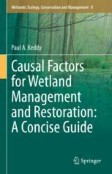Search
Search Results
-
Testing for synergistic effects of natural and anthropogenic disturbance on ecological communities at a landscape scale
ContextAnthropogenic and natural disturbances may interact synergistically, magnifying their individual effects on biodiversity. However, few studies...

-
Resilient fruit-feeding butterfly assemblages across a Caatinga dry forest chronosequence submitted to chronic anthropogenic disturbance
AbstractInterest in forest regeneration has increased as secondary forests in regeneration process are cited as the forests of the future. However,...

-
The community stability of Symbiodiniaceae and bacteria of different morphological corals and linkages to coral susceptibility to anthropogenic disturbance
Variously shaped corals, such as branching and massive corals, exhibit divergent environmental susceptibility properties. The susceptibility...

-
Determination of optimal tree height models and calibration designs for Araucaria araucana and Nothofagus pumilio in mixed stands affected to different levels by anthropogenic disturbance in South-Central Chile
Key messageHere, we present a workflow for determining the optimal tree height model and calibration design for forests affected to varying degrees...

-
Synergistic effect of habitat loss and chronic anthropogenic disturbances on ant species richness
Habitat loss is an important factor in global biodiversity loss, but categorizing human-modified landscapes as fragments of natural or anthropogenic...

-
Natural Disturbance
Natural disturbances remove biomass from wetlands. In extreme cases, they also remove the substrate. Natural disturbances tend to increase biological...
-
Assessing Anthropogenic Pressure of Forest Villages in Semi-arid Forest Ecosystem in Western India using Cumulative Disturbance Index (CDI)
AbstractHuman communities living in and around the forest are highly dependent on the forest for subsistence and livelihood. Kailadevi Wildlife...

-
Disturbance Ecology
This edited work presents a multi-faceted view on the causes and consequences of disturbance in ecosystems. Vegetation can be affected by a variety...

-
Little Evidence to Support the Risk–Disturbance Hypothesis as an Explanation for Responses to Anthropogenic Noise by Pygmy Marmosets (Cebuella niveiventris) at a Tourism site in the Peruvian Amazon
The risk–disturbance hypothesis states that animals react to human stressors in the same way as they do to natural predators. Given increasing...

-
Effectiveness of ant communities to detect anthropogenic disturbance in Neotropical forest landscapes: a case study in the Brazilian Amazon
Understanding how communities respond to anthropogenic disturbance is considered a step**-stone to support decision-making by environmental...

-
Where the risk is more intense: riparian forests keep the euglossine bees community most affected by anthropic disturbance in the Caatinga dry forest
Anthropogenic disturbances have drastic negative effects on the biodiversity, thereby also compromising the ecosystem service it provides. Bees are...

-
Tradeoffs between resources and risks shape the responses of a large carnivore to human disturbance
Wide-ranging carnivores experience tradeoffs between dynamic resource availabilities and heterogeneous risks from humans, with consequences for their...

-
Same, but different: similar states of forest structure in temperate mountain regions of Europe despite different social-ecological forest disturbance regimes
ContextEcosystem services provided by mountain forests are critically linked to forest structure. Social-ecological disturbance regimes (i.e., the...

-
Lowland forest fragment characteristics and anthropogenic disturbances determine alien plant species richness and composition
Loss of habitat and biological invasion are the main threats to biodiversity. In intensive agricultural or urban landscapes, forest fragments, even...

-
Stream macroinvertebrate community metrics consistently respond to a spatiotemporal disturbance gradient but composition is more context-dependent
ContextImproving our understanding of how riverine communities respond to anthropogenic change requires spatial comparisons across multiple sites,...

-
Community type and disturbance type interact to determine disturbance response: implications for extending the environmental filter metaphor
Ecological disturbances act as environmental filters by removing species with particular characteristics, resulting in community types associated...

-
Anthropogenic city noise affects the vocalizations of key forest birds
Some urbanization impacts on biodiversity are often underestimated such as noise pollution generated by anthropogenic activities. Birds inhabiting...

-
Individual and interactive effects of chronic anthropogenic disturbance and rainfall on taxonomic, functional and phylogenetic composition and diversity of extrafloral nectary-bearing plants in Brazilian Caatinga
Chronic anthropogenic disturbance (CAD) and climate change represent two of the major threats to biodiversity globally, but their combined effects...

-
Ecological thresholds of Odonata larvae to anthropogenic disturbances in neotropical savanna headwater streams
We evaluated whether ecological thresholds could be detected along gradients of disturbances by using larval Odonata genera. Morphological,...

-
Towards a better understanding of the effect of anthropogenic habitat disturbance on the invasion success of non-native species: slugs in eastern Canadian forests
The disturbance hypothesis postulates that habitat disturbance favours the invasion success of non-native species. Its unspecific formulation has led...

